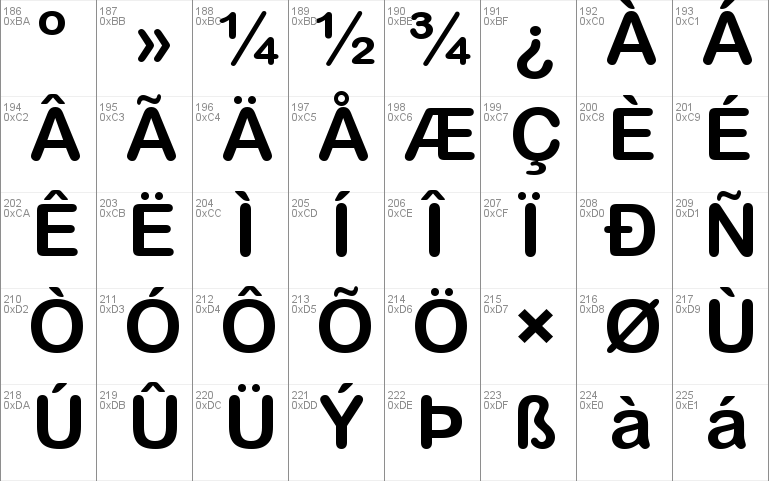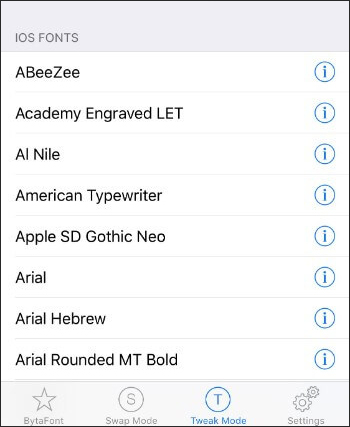Page Content
Free Hebrew fonts (.ttf &.otf). Hebrew available in Windows and Mac OS X version. TrueType and OpenType fonts. Search from a wide range of typography fonts. Ironically, a number of the TrueType fonts that come with Windows, including Times New Roman, Arial, Courier New, and Microsoft Sans include Hebrew characters in their support of Unicode. (The Macintosh versions of these fonts do not support Hebrew!) If you enable Hebrew support in Windows, some other fonts are also made available such as David. Arial Hebrew 5.0d2e1 font (Font family name: Arial Hebrew; Font style name: Regular), 122 characters in total. Character distribution range:Basic Latin,Latin-1 Supplement,Hebrew,General Punctuation,Currency Symbols,Alphabetic Presentation Forms. .Arial Hebrew Desk Interface Regular 10.0d7e1 font (Font family name:.Arial Hebrew Desk Interface; Font style name: Regular), 195 characters in total.
- Typing Hebrew
- Language Codes
- Language Codes:
he(Hebrew)
- Language Codes:
About the Hebrew Script
The Hebrew script is written right to left and can include diacritics to specify vowel marks, but these marks are often ommited in Modern Hebrew. In order to process Hebrew correctly, software must be able to display text from right to left and include vowe marks as needed.
Note: Modern Hebrew is sometimes called Ivrit, a form closer to the actual pronuciation of עברית 'Hebrew'
Note that the Hebrew script is used for other Jewish community languages, particularly
Yiddish (which includes additional characters). See Jewish Languages.org for
details on other languages written in the Hebrew alphabet.

Fonts
Fonts by Platform
Both Microsoft and Apple provode fonts for Hebrew in their operating systems.
- Windows – David, Miriam, Arial Unicode MS, Gisha (Vista +) include vowel marks.
- Mac OS X – Corsiva Hebrew, New Peninim MT, Raanana, ArialHb, Lucida Grande, others
- Very recent versions of Times New Roman, Arial and some common fonts may contain Hebrew characters with vowel marks. Older versions of these fonts may be missing vowel marks.

Freeware Fonts
Additional freeware fonts can be downloaded from the sites below. All fonts include vowel points and many include Yiddish characters.
- Ezra SIL – Includes support for Biblical Hebrew. Based on the typography of the Biblia Hebraica Stuttgartensia (BHS).
(Note: There is an older font 'SIL Ezra' which is not Unicode compliant). - Cardo – Includes vowel marks and Greek
- SBL Hebrew Font – Designed by Tiro Software for Biblical Hebrew. Keyboard utilities also available.
- Mike Hebrew – designed with elements of calligraphy
Test Sites
If you have your browser configured correctly, the Web sites below should display the correct characters. If you have difficulties, see list below for font and browser configuration instructions.
- www.haaretz.co.il (El Haaretz)
- www.snunit.k12.il (israeli Education Site)
If this site is not displaying correctly, see the Browser Setup page for debugging information.
Typing Hebrew
Keyboards: Native vs. Transliterated Layout
Hebrew keyboards utilities allow users to type Hebrew characters on their computers. These utilitites come with two main layout option types. One is the native layout which is similar to a Hebrew typewritier from Israel.
The other is a transliterated (or homophonic/QWERTY) layout in which Hebrew characters are mapped to the closest English keyboard counterpart. For instance typing Latin A would be Hebrew 'א', B would be Hebrew 'ב', Latin L would be Hebrew 'ל ' and Latin M would be Hebrew 'מ'. This layout is often preferred by English speakers because it is easier to remember the position of the letters.
Windows
Windows only has access to the native layout, but Kansas University does offer a homophonic layout for learners.
- Society for Biblical Hebrew Keyboards (allows vowel marks)
Macintosh
A native Hebrew and QWERTY Hebrew keyboard are available in Macintosh. See the Macintosh Keyboard instructions and Hebrew Keyboard Layouts (Muhlenberg) for more information.
See also
- Yiddish and the Mac – Also covers Hebrew
Mobile
- iPhone/iPad: Recent versions of iOS include a Hebrew keyboard. You can see updated iOS instructions on the Mobile page.
- Droid: A Hebrew Language Pack and other utilities are available from the Google Play store.
RTL Typing Tips
For a person new to an RTL script, typing can be a little disorienting and different from LTR scripts. The RTL page presents some helpful information including how to right align a document and work with punctuation.
Web Development
Encodings
Unicode (utf-8) is the preferred encoding for Hebrew, especially if the document includes vowel codes. However some other encodings may be encountered
Historical Enclodings
- Logical with Vowel Marks:
utf-8(Unicode) - Logical, Consonants Only:
iso-8859-8-i - Visual (Avoid):iso-8859-8 (Visual Hebrew), win-1255
Logical Hebrew/Unicode vs. Visual Hebrew
Logical Hebrew vs. Visual Hebrew is an older disctinction about how text was entered into a document.
In the older Visual Hebrew (Deprecated) system, text had to be entered backwards (as if they were left to right) in order to to be correctly displayed on the screen. In a Logical Hebrew system (including Unicode), letters are entered in the correct order and then correctly sequenenced from right to left.
For example, in the word (אדמ) Adam, in a logical encoding, a person would type the letters in the order 1 (מ) A/מ, 2 (ד) for D, 3 (א) for M, but the display would be RTL. In a visual encoding, a developer would need to enter 1 (א) for M, 2 (ד) for D, 3 (מ) A/מ because the text could only be layed out LTR.
Language Codes
Language Tags allow browsers and other software to process Hebrew script text more efficiently. Some major language tags are:
Selected Jewish Language Tags
he– Hebrewhbo– Ancient/Biblical Hebrewyi– Yiddishly– Ladino/Judeo-Spanishbhh– Bukhori/Judeo Tajiki Persianczk– Knaanic/Judeo-Czechjdt– Juhari/Judeo-Tat-Persianjrb– Judeo Arabic Languagessmp– Samaritan Hebrewyej– Yevanic/Judeo-Greek

Specifying Text Direction
Some HTML editors set the direction automatically, but it can also be set manually
using the new <dir> and <bdo> attributes. See the Right-to-Left Alignment tips page for more details.
Arial Hebrew Font Free
Using Unicode Escape Characters
If you wish to input a word or short phrase, you can use Unicode entity codes. See
the Hebrew Unicode Chart to view hexadecimal code points for Hebrew and other Jewish languages.
Links
Hebrew Computing
Windows
- Society for Biblical Hebrew Keyboards (allows vowel marks)
Macintosh
- Yiddish and the Mac – Also covers Hebrew
Linux/Unix
Yiddish Computing
- A User’s Guide to Yiddish on the Internet – Covers Windows, Macintosh and Unix.
- UYIP (Understanding Yiddish Information Processing) – Includes links to other resources
Hebrew Writing
Script Basics
- Hebrew Alphabet
– Aimed for general Jewish audience. - Hebrew
Character List – Written for HTML and XML developers.
Additional Fonts

Includes vowel marks, Yiddish and Biblical Hebrew
- Ezra SIL – Based on the typography of the Biblia Hebraica Stuttgartensia (BHS).
(Note: There is an older font 'SIL Ezra' which is not Unicode compliant). - SBL Hebrew Font – Designed for Biblical Hebrew
- MPH 2B Damase – Large font with additional ancient scripts such as Aegean, Cuneiform, Coptic, and others
- Cardo – Includes vowel marks and Greek
Web Development Tips
W3C
Tex Texin Hebrew Articles

- TexTexin Right-to-Left Markup – Includes CSS style tags
Other Articles
- Hebrew and Computers – By Jonathan Rosenne. Includes Windows and some Unix. Original version also available.
- Writing Backwards – Article about developing Hebrew websites for professional Web developers.
- Nir Dagen Hebrew on the Web – Some notes and essays about developing Hebrew Web sites.
Topics▼
| Formats▼
| Typefaces▼
|
Arial Hebrew was designed by Baruch Gorkin, with the advice of Zvika Rosenberg. [Wikipedia] ©Monotype Typography ltd, Type Solutions Inc 1990-1993.